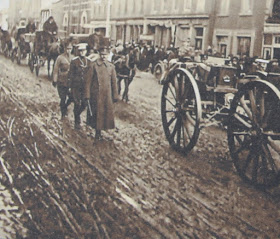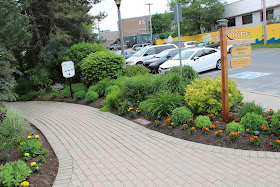Lieutenant William Frederick Nelson Sharpe 1892 - 1915
A Canadian Military Aviation Pioneer
One of Canada's first military airmen during the Great War (1914 - 1918) was Prescott's native son, William F. N. Sharpe. His pioneering role in our country's earliest attempt to organize an air force has earned him a place in Canada's military history.
William Sharpe was born in Prescott on December 6, 1892, to Frederick and Ida Bell (née Mills) Sharpe. When Sharpe was quite young, he moved with his family to Ottawa where he received his education. Powered human flight became a reality during his childhood and, as a young man, Sharpe received his flight instruction from the Curtiss Flying School in San Diego, California.
 |
| Sharpe's name appears on the Prescott Cenotaph. |
Given the rank of lieutenant, Sharpe was sent to Europe where he received instruction in military aviation. On February 4, 1915, while on a solo flight training exercise with Britain's Royal Flying Corps in Shoreham, England, Lieutenant Sharpe's bipland crashed, killing the young pilot.
With that tragedy, Lieutenant Sharpe became Canada's first military airman casualty of the First World War.
Lieutenant Sharpe's remains were repatriated and on March 22, 1915, he was given a funeral in Prescott with full military honours. The funeral cortege, let by a caisson bearing the glag draped coffin, was the largest ever seen in Prescott. Large crowds of mourners, including his parents and his young widow, Alma Keating (née Tompkins) Sharpe, all gathered to pay their respects to this pioneer aviator who died in service to his country.
Lieutenant Sharpe was laid to rest in Prescott's Sandy Hill Cemetery. Sharpe's courage and sacrifice were recognized with a Memorial Cross, granted since 1919 to grieving mothers and widows as a memento of personal loss. In 1996, Lieutenant Sharpe's grave received a new monument from teh Commonwealth War Graves Commission. In attendance was the 661 Squadron of Prescott's Air Cadets, whihc in 1997 was renamed in honour of Lieutenant William F. N. Sharpe.
 |
| Sharpe's name appears on the Memorial Fountain on Henry Street West. |





















































